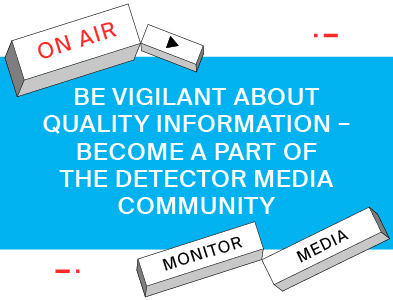A number of Russian media have disseminated information that the Bulgarian National Radio (BNR) refused to broadcast an interview with the Russian Ambassador to Bulgaria Eleonora Mytrofanova at the request of Ukraine. In their publications, the publications refer to a post by journalist Peter Volgin on Facebook. They say this is “an act of political censorship”. However, this is manipulation.
The analysts from the StopFake project drew attention to it. They found out that on December 14, on the page of the Politically Incorrect program on the social network, an announcement was published that the Russian Ambassador to Bulgaria, Eleonora Mytrofanova, would be a guest in one of the episodes of the program, the topic of which would be the effect of the destruction of the Soviet Army monument on Bulgarian-Russian relations; what needs to happen to end the hostilities in Ukraine”, etc. The reason for the interview was the beginning of dismantling the figures of the Soviet Army monument in Sofia.
In fact, the decision to demolish the monument, located in the center of the Bulgarian capital, was made 30 years ago, but work began only on December 12, 2023, and then taking into account safety - according to the governor of Sofia Viara Todeva, the monument has not been repaired for 70 years, and examination showed that it was dangerous and had large cracks. Once removed from the pedestal, the figures will be restored and exhibited in the Museum of Socialist Art or another suitable location.
The dismantling of the monument caused a sharp reaction from Russia, and the press secretary of the Russian Foreign Ministry, Mariia Zakharova, said: “We consider the destruction of the monument to our common past as another hostile step by official Sofia, complicating the already stalemate on the bilateral track”. She threatened Bulgaria that “she herself will have to pay for the consequences of this shame”, and Zakharova’s statement was distributed on the Facebook page of the Russian Embassy in Sofia.
Against this background, the announcement of an interview with the Russian ambassador in the BNR program Politically Incorrect caused a protest from the Bulgarian public. The Ukrainian Embassy in Bulgaria has published an official position, which notes that providing the opportunity for the Russian Ambassador to Bulgaria to speak “is a kind of complicity in the Kremlin’s armed aggression and hybrid war not only against Ukraine, but also the entire democratic world”. Subsequently, the press center of the Movement for Rights and Freedoms released a statement by the head of the parliamentary group, Delyan Peevski, in which he noted that he considers the participation of the Russian Ambassador on public radio as “a gross demonstration of disrespect for national sovereignty, the pan-European position and values, as well as disregard for national interests of Bulgaria”. Peevski also called on the Electronic Media Council (EMC) and other bodies to pay attention to “prevent such a provocation on the national airwaves”.
It is interesting that the publication by radio host Peter Volhin, which Russian media refers to, does not contain accusations against Ukraine or the Ukrainian embassy - the journalist’s post does not mention them at all: “Delyan Peevsky denied the participation of Ambassador Eleonora Mytrofanova on National Radio. The BNR Program Council banned broadcasting an interview with him. Management said there was no connection between the two events. What do you think? The Ukrainian Embassy is mentioned in another Volhin publication in the following context: “I learned that Mr. Delyan Peevsky, as well as the Ukrainian Embassy, were very outraged by the appearance of Ms. Eleonora Mytrofanova as a guest in our program Politically Incorrect”. In the same publication, the presenter reports that “neither a deputy, nor a minister, nor a prime minister can tell National Radio what to broadcast and what not to broadcast. What will be broadcast on the radio is decided by the people working on it”.
These words of Volhin coincide with the statement of the leadership of the BNR, published on the media website on December 16, which notes that “insinuations about censorship are unacceptable and speculative”. “BNR, as a public broadcaster, strictly adheres to the principles of freedom of speech, objectivity and independence of media content, pluralism of points of view, in compliance with high professional and ethical standards”.
Propagandists spread such manipulations to accuse Ukraine of failing to meet freedom of speech standards. Like, therefore Ukraine is not actually a European state. But in reality, it is Russia that actually does not have the institution of independent media and is trying to adjust the media in other countries to its own interests, ignoring the basics of journalistic ethics. Detector Media has already written about how Russian propaganda is spreading in the Bulgarian media.
